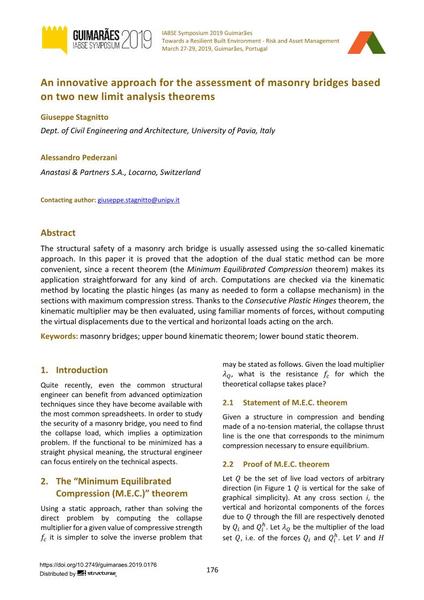An innovative approach for the assessment of masonry bridges based on two new limit analysis theorems

|
|
|||||||||||
Bibliographic Details
| Author(s): |
Giuseppe Stagnitto
(Dept. of Civil Engineering and Architecture, University of Pavia, Italy)
Alessandro Pederzani (Anastasi & Partners S.A., Locarno, Switzerland) |
||||
|---|---|---|---|---|---|
| Medium: | conference paper | ||||
| Language(s): | English | ||||
| Conference: | IABSE Symposium: Towards a Resilient Built Environment Risk and Asset Management, Guimarães, Portugal, 27-29 March 2019 | ||||
| Published in: | IABSE Symposium Guimarães 2019 | ||||
|
|||||
| Page(s): | 176-183 | ||||
| Total no. of pages: | 8 | ||||
| DOI: | 10.2749/guimaraes.2019.0176 | ||||
| Abstract: |
The structural safety of a masonry arch bridge is usually assessed using the so-called kinematic approach. In this paper it is proved that the adoption of the dual static method can be more convenient, since a recent theorem (theMinimum Equilibrated Compressiontheorem) makes its application straightforward for any kind of arch. Computations are checked via the kinematic method by locating the plastic hinges (as many as needed to form a collapse mechanism) in the sections with maximum compression stress. Thanks to theConsecutive Plastic Hingestheorem, the kinematic multiplier may be then evaluated, using familiar moments of forces, without computing the virtual displacements due to the vertical and horizontal loads acting on the arch. |
||||
| Keywords: |
masonry bridges upper bound kinematic theorem lower bound static theorem
|
||||
